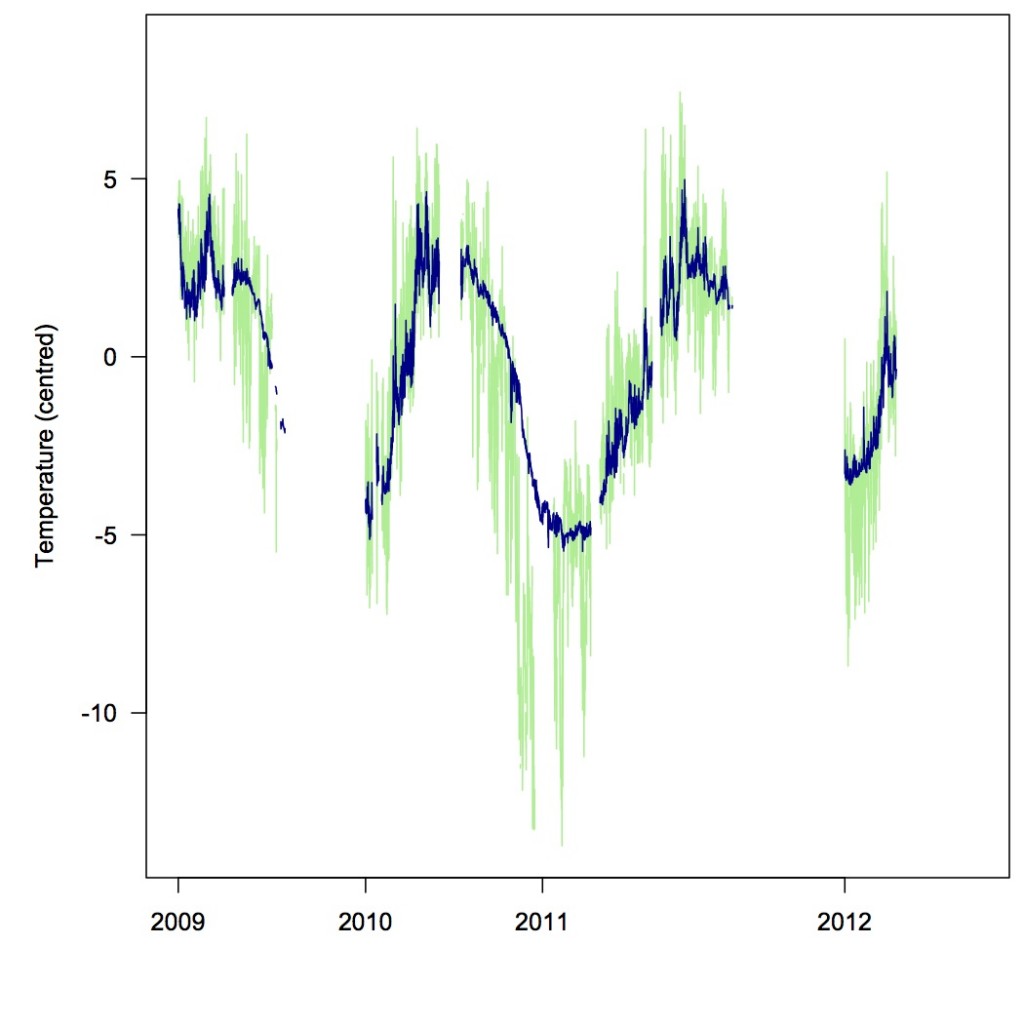Another major traits database has recently come online. This time, all you need to know about the life histories of 21,000+ amniotes (reptiles, birds, mammals), courtesy Nathan Myhrvold, Morgan Ernest and colleagues. I’ve been working with ecological traits for a good while now, and this kind of thing excites me. It also demonstrates the kind of self-interested altruism that typifies the Open Science mentality. As Morgan puts it in her blog post on the paper:
The project started because my collaborator, Nathan Myhrvold, and I both had projects we were interested in that involved comparing life history traits of reptiles, mammals, and birds, and only mammals had easily accessible life history databases with broad taxonomic coverage. So, we decided to work together to fix this. To save others the hassle of redoing what we were doing, we decided to make the dataset available to the scientific community.
In other words, you start by fixing a problem that you yourself have, and then make your solution available to save others the bother. Practical and admirable. The same thing is happening elsewhere, with other kinds of ecological data - take the ‘data rescuing’ example of the PREDICTS project:
https://twitter.com/KatheMathBio/status/676448069890744321
(Compare and contrast with this fascinating, frustrating new book by John William Prothero, The Design of Mammals: A Scaling Approach, another monumental data compilation which includes a multitude of intriguing scaling relationships, calculated from 16,000 records for around 100 response variables, almost none of which are replicable from the subsets of data provided in the Resources section online.)
But Morgan’s blog post becomes really interesting as she muses on the what the end game might be for traits databases. She proposes a centralised trait database, with a focus on individual records, that is easy to contribute to and where data are easily accessible. We had a short exchange on Twitter after reading this, but I’ve continued mulling it over and my thoughts have expanded past 140 characters. Hence, this.
Basically, I have been trying to imagine what this kind of meta-dataset might look like. And my difficulty in doing this in part boils down to how we define a ‘trait’.
The simplest definition is pretty broad, with a trait just any measurable property of an organism (noting that some ‘traits’ apply only to populations - e.g. abundance - or even entire species - e.g. range size). And my own work, like Morgan’s, has typically focused on life history and ecological traits - things like size, growth, reproduction, and feeding. In some respects these are some of the simplest traits to describe, but they can still be tough to measure, and (especially) to classify and record.
Part of this difficulty arises because much work on traits involves imposing categories on nature, and nature abhors a category. Then again, individuals of the same species can do quite different things, or the same individual might display different traits at different times or in different places. Some people have tried to get around this by using a ‘fuzzy coding’ approach - for instance, rather than having to classify me as ‘carnivore’ or ‘herbivore’, you could say that my diet is split, say, 15% carnivore to 85% herbivore. In many ways this seems a sensible solution, but it is of course rather subjective, still requires some rather arbitrary categorisation, and, in the context of this post, is very difficult to incorporate into a more generic database.
Other traits may seem simpler. Body size, for example, the so-called ‘master trait’, us surely easy to measure? You just weigh your organism, right? Or perhaps you measure it’s length. And is that total length, or wingspan, or leg length, or standard length? Oh, you want dry weight? Or mgC? Equivalent Sperical Volume, you say? And so on and on…
Related to body size are other morphological traits. For instance, my colleague Gavin Thomas and his group are busy 3D scanning beaks of all species of bird (you can help, if you like!). Such sophisticated morphological measurement quickly generate individual-level ‘trait’ databases of many dimensions; how might these be incorporated into a more general database? Record each dimension? Or use some agreed (but somewhat arbitrary) composite measure of ‘shape’?
One more example of a different class of traits. On the Marine Ecosystems Research Programme, I’m working quite a bit with ecosystem modellers, and their lists of desired traits are terrifying: Michaelis Menton half sat. uptake const.; Excreted ingested fraction; Respired fraction - all things that seem a long way from the sorts of life history databases I’m familiar with, or from things that can be easily observed in the field. Many of them will be body size and temperature dependent (at least). And so what might be most appropriate to record are the parameters from some fitted scaling relationship; but this means losing a lot of raw data, which surely we would like to retain?
And so on.
So whilst of course I applaud the efforts of people like Morgan to make large trait databases more useful and accessible, and agree completely that we should both think big and think individual, a complementary angle of attack might be to make linking existing databases easier. Of course, they need to be available, well documented, and appropriately licensed as a first step, and straightforward programmatic access should be designed in. But we can also make more efforts to link to taxonomic standards, to ensure we include accurate geographical and contextual information with individual records. Always ensuring our data are nice and tidy so that others can easily do more interesting things with them.


